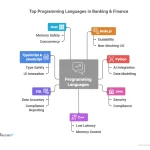
Having a good understanding of Money Facts and Statistics can be helpful. Money is something we all have to deal with at some point, and knowing what can help and what can hurt us can make a huge difference. Often times, mental health and money problems are intricately connected.
Paper money was first printed in the U.S.
During the American Revolution, the Continental Congress introduced the first national paper money in the United States. These notes represented IOUs and were usually accompanied by propaganda messages about American Liberty and the Union.
In 1791, Alexander Hamilton served as the first Secretary of the Treasury. The Bank of the United States was the nation’s first central bank. It was established to handle government deposits and facilitate commerce. In 1882, the Bank of the United States issued two series of notes.
As the Civil War escalated, the need for paper currency increased. To help finance the war, the U.S. government issued paper money to compensate for a shortage of coins. The new money was printed in five cents, fifty cents, and one dollar denominations. These notes were printed on special paper containing segments of red and blue fibers.
A dozen eggs could cost $90 in today’s money
Despite the price hike, there has been a steady increase in consumer demand for eggs. In October, consumers spent an average of $3.42 for a dozen large eggs, compared to $1.64 a year ago. This may be the result of recent winter storms.
During the 1950s, a dozen eggs cost about $4.36, or about the equivalent of $90 today. But there is no shortage of innovations in the food industry.
A few notable inventions included Nescafe’s instant coffee, Teflon, and Mott’s apple juice. In addition, a pick axe was an essential tool for a gold miner.
In the 1960s, the price of eggs went down, and a dozen could be had for as little as 50 cents. And while the prices of most food items have gone up in the last 20 years, a dozen eggs have actually become more affordable.
Student loan debt is discretionary
Discretionary income is a term used to describe the amount left in your pocket after you have paid for the necessities, such as rent, food, and medical bills. This is an important component of Income-Driven Repayment (IDR) plans, which determine your monthly payment based on your income and household size. It can also help determine whether you are eligible for forbearance.
Discretionary income is a great way for the government to gauge whether you can afford your student loan payments. You can find out how much you can afford by utilizing a calculator from the Department of Education. It uses a standardized formula to determine your monthly payment amount.
The calculators can be found for 48 contiguous states, including Alaska. It can also be used to find out how much you can expect to repay on your student loans in the coming years.
Mental health and money problems are often intricately linked
Often, the links between mental health and money problems are complicated. Some people are not able to afford basic needs, and others may experience anxiety that they cannot explain. Spending money can give people a temporary high, and can help them to feel better in the moment.
People with mental health problems are three and a half times more likely to be in debt. And they are three times more likely to have thoughts about suicide in the past year. Getting a handle on both problems can benefit both mental and financial health.
People with mental health issues are often unable to work, due to symptoms. They also may have difficulty understanding bills and remembering account details. Getting financial help is crucial to getting back on track.





